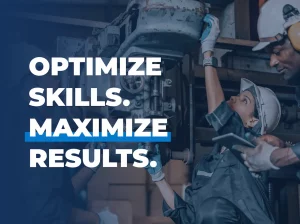
This program is excellent for training technicians, operators, control practitioners and engineers as well as for the multi-craft training needs of process and manufacturing facilities.
This lesson is designed for participants familiar with test instruments and devices.
This lesson introduces the principles of pneumatic instrument operation and the terms force, pressure and compressibility are defined. The operation of pneumatic air supply system components, including compressors, dryers, filters and regulators is explained. System maintenance and testing is also taught. Filter cartridge replacement and regulator maintenance is demonstrated.
This lesson is designed for participants familiar with test instruments and devices.
This lesson introduces the principles of pneumatic instrument operation and the terms force, pressure and compressibility are defined. The operation of pneumatic air supply system components, including compressors, dryers, filters and regulators is explained. System maintenance and testing is also taught. Filter cartridge replacement and regulator maintenance is demonstrated.
This lesson is designed for participants familiar with test instruments and devices.
This lesson introduces the principles of pneumatic instrument operation and the terms force, pressure and compressibility are defined. The operation of pneumatic air supply system components, including compressors, dryers, filters and regulators is explained. System maintenance and testing is also taught. Filter cartridge replacement and regulator maintenance is demonstrated.
This lesson is designed for participants familiar with test instruments and devices.
This lesson introduces the principles of pneumatic instrument operation and the terms force, pressure and compressibility are defined. The operation of pneumatic air supply system components, including compressors, dryers, filters and regulators is explained. System maintenance and testing is also taught. Filter cartridge replacement and regulator maintenance is demonstrated.
This comprehensive interactive multimedia training program was produced in association with the Instrument Society of America. (ISA). This program trains participants in the theory of pneumatic instrumentation and the principles of operation, characteristics, and capabilities of components typically found in pneumatic control loops.
This program is excellent for training technicians, operators, control practitioners and engineers as well as for the multi-craft training needs of process and manufacturing facilities.